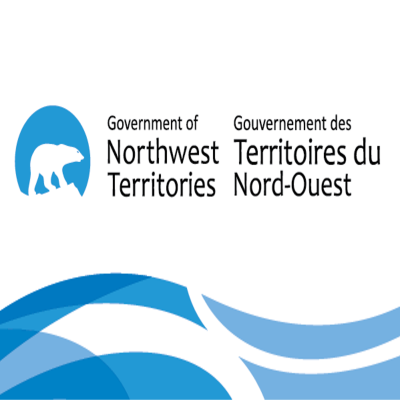location
Type of resources
Available actions
Topics
Keywords
Contact for the resource
Provided by
Years
Formats
Representation types
Update frequencies
status
Scale
Resolution
-
Notagildi: Reitakerfi eru nauðsynlegt til að birta upplýsingar sem af einhverjum ástæðum er ekki hægt að birta stakar s.s. vegna persónuverndar, umfangs verkefnis eða nákvæmni þeirra upplýsinga sem fyrir liggja. Reitakerfi Íslands er með mismunandi reitastærðum til að mæta mismunandi þörfum notenda við upplýsingamiðlun. Mælt er með notkun reitakerfisins m.a. þegar verið er að bera gögn saman milli stofnana. Reitakerfið er byggt á Lambert Azimuthal Equal Area vörpun sem tryggir að allir reitir sé jafn stórir. En það er helsta skilyrði þess að reitakerfið sé Inspire tækt. Viðmiðun er ISN 2004 Ef reitakerfið er notað í einhverjum af ISN Lambert vörpunum er það ferhyrnt. Orðskýringar: Heildarkerfið er nefnt reitakerfi. Hvert lag í því er nefnt net. Einingar í netinu eru nefndar reitir. Heiti reitana: Hver reitur hefur nafn sem er einkvæmt og er m.a. byggt upp á stærðareiningunni. 1km 10km og 100m skrárnar ná yfir strandlínu og eyjar landsins en 100km skráin nær yfir alla efnahagslögsöguna. grid_100k grid_50k grid_25k grid_10k grid_5k grid_2_5k grid_1k grid_500m grid_250m grid_100m Frekari tækniupplýsingar er að finna hér https://inspire.ec.europa.eu/id/document/tg/gg
-

ELF Geographical Names (GN) Iceland is one of 12 themes in the European Location Project (ELF). The purpose of ELF is to create harmonised cross-border, cross-theme and cross-resolution pan-European reference data from national contributions. The goal is to provide INSPIRE-compliant data for Europe. A description of the ELF (European Location Project) is here: http://www.elfproject.eu/content/overview Encoding: INSPIRE version 4
-
RADARSAT-1, in operation from 1995 to 2013, is Canada's first earth observation satellite. Developed and operated by the Canadian Space Agency (CSA), it has provided essential information to government, scientists and commercial users. Ultimately, the RADARSAT-1 mission generated the largest synthetic-aperture radar (SAR) data archive in the world. In April 2019, 36,000 images were made accessible through the Earth Observation Data Management System (eodms-sgdot.nrcan-rncan.gc.ca). A heatmap of processed images was produced by the CSA and helps visualize the density of images available by mapped sector during the RADARSAT-1 mission.
-

Location and contact information for Pacific Recreational Fishery Salmon Head Recovery Depots. The sport fishing community has an important role in the recovery of coded-wire tags found in Coho and Chinook. A coded-wire tag is a 1mm piece of wire that is laser etched with a unique number. Tags are injected into the nose cartilage of juvenile salmon prior to ocean migration. Annually, Canada and the United States tag over 50 million juvenile salmon. Fisheries and Oceans Canada applies about 5.5 million tags, using about 5.5 kilometres of wire. Anglers can recognize the presence of a coded-wire tag because of the missing adipose fin (located on the dorsal surface of the salmon). If you have caught an adipose fin clipped Coho and Chinook, it is a simple matter of removing the head from the fish, completing a sport head label and then submitting the head to a Sport Head Recovery Depot in the area. It is just as important to turn in heads from terminal or freshwater sites as it is from marine areas. Even though anglers fishing close to hatcheries can be fairly certain of the origin of their catch, data will not be recorded unless the heads from fin-clipped recoveries are turned in. Without the data, the health of the stock and the value of the resource to anglers could be underestimated.
-

LOC - Locations and geodetic networks (location)Positional information and services. For example, resources describing addresses, geodetic networks, postal zones and services, control points, and place names.
-

This dataset represents points where address site data has been collected. These points are an amalgamation of different origin point data translated into a NG911-compliant schema using ESRI's Address Management Solution as a reference for compliance and data integrity.*This dataset requires extensive QA/QC and should not be used as an authoritative, source only for application-testing purposes*
-
Map of harbours critical to fishing and aquaculture industries managed by harbour authorities (Core fishing harbours), harbours that support fishing and aquaculture industries that aren’t managed by harbour authorities (Non-core fishing harbours), and harbours that support the recreational community (Recreational harbours).
-

Location of geomagnetic observatories of Canada maintained by the Canadian Hazard Information Service. For more information regarding Geomagnetism Canada, visit http://www.geomag.nrcan.gc.ca.
-

This data contains the memorials and monuments located in communities across the country. Currently, more than 8,000 memorials are included in this data. This data is regularly updated as we continue to receive information on Canadian military memorials.
-

The SMTC map and database provides the location of, and information about completed, under construction, or planned mass timber projects and manufacturing facilities in Canada. Project information includes building size, height, occupancy, mass timber materials used, year of construction, and other criteria. Manufacturer information includes facility location, materials produced, and production capacity.
 Arctic SDI catalogue
Arctic SDI catalogue